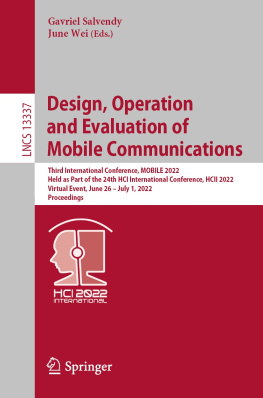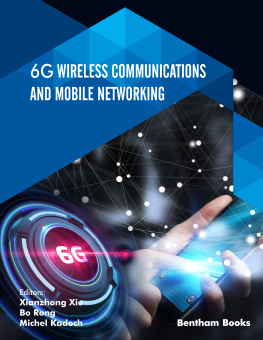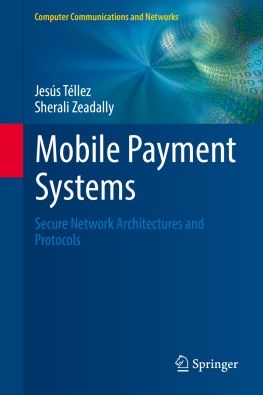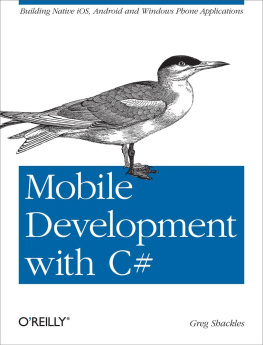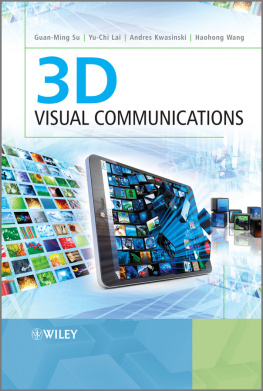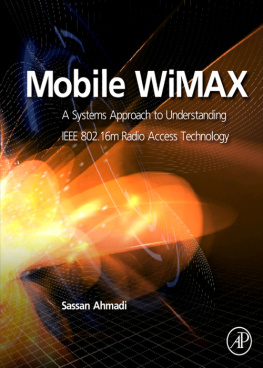Taid - Mobile Communications Systems Development
Here you can read online Taid - Mobile Communications Systems Development full text of the book (entire story) in english for free. Download pdf and epub, get meaning, cover and reviews about this ebook. year: 2021, genre: Computer. Description of the work, (preface) as well as reviews are available. Best literature library LitArk.com created for fans of good reading and offers a wide selection of genres:
Romance novel
Science fiction
Adventure
Detective
Science
History
Home and family
Prose
Art
Politics
Computer
Non-fiction
Religion
Business
Children
Humor
Choose a favorite category and find really read worthwhile books. Enjoy immersion in the world of imagination, feel the emotions of the characters or learn something new for yourself, make an fascinating discovery.

Mobile Communications Systems Development: summary, description and annotation
We offer to read an annotation, description, summary or preface (depends on what the author of the book "Mobile Communications Systems Development" wrote himself). If you haven't found the necessary information about the book — write in the comments, we will try to find it.
Taid: author's other books
Who wrote Mobile Communications Systems Development? Find out the surname, the name of the author of the book and a list of all author's works by series.
Mobile Communications Systems Development — read online for free the complete book (whole text) full work
Below is the text of the book, divided by pages. System saving the place of the last page read, allows you to conveniently read the book "Mobile Communications Systems Development" online for free, without having to search again every time where you left off. Put a bookmark, and you can go to the page where you finished reading at any time.
Font size:
Interval:
Bookmark:
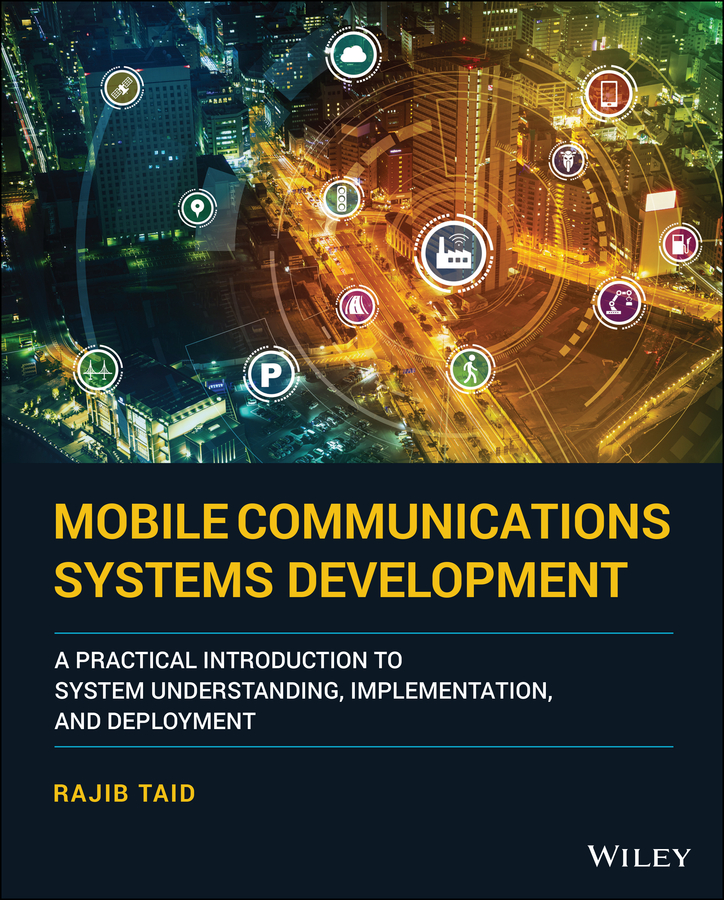
- Chapter 2
- Chapter 3
- Chapter 5
- Chapter 6
- Chapter 7
- Chapter 8
- Chapter 9
- Chapter 14
- Chapter 16
- Chapter 17
- Chapter 18
- Chapter 19
- Chapter 20
- Chapter 1
- Chapter 2
- Chapter 3
- Chapter 4
- Chapter 5
- Chapter 6
- Chapter 7
- Chapter 8
- Chapter 9
- Chapter 10
- Chapter 11
- Chapter 12
- Chapter 13
- Chapter 14
- Chapter 15
- Chapter 16
- Chapter 17
- Chapter 18
- Chapter 19
- Chapter 20
- Chapter 21
Rajib Taid

This edition first published 2021
2021 John Wiley & Sons Ltd
All rights reserved. No part of this publication may be reproduced, stored in a retrieval system, or transmitted, in any form or by any means, electronic, mechanical, photocopying, recording, or otherwise, except as permitted by law. Advice on how to obtain permission to reuse material from this title is available at http://www.wiley.com/go/permissions.
The right of Rajib Taid to be identified as the author of this work has been asserted in accordance with law.
Registered Offices
John Wiley & Sons, Inc., 111 River Street, Hoboken, NJ 07030, USA
John Wiley & Sons Ltd, The Atrium, Southern Gate, Chichester, West Sussex, PO19 8SQ, UK
Editorial Office
The Atrium, Southern Gate, Chichester, West Sussex, PO19 8SQ, UK
For details of our global editorial offices, customer services, and more information about Wiley products, visit us at www.wiley.com.
Wiley also publishes its books in a variety of electronic formats and by printondemand. Some content that appears in standard print versions of this book may not be available in other formats.
Limit of Liability/Disclaimer of Warranty
While the publisher and authors have used their best efforts in preparing this work, they make no representations or warranties with respect to the accuracy or completeness of the contents of this work and specifically disclaim all warranties, including without limitation any implied warranties of merchantability or fitness for a particular purpose. No warranty may be created or extended by sales representatives, written sales materials or promotional statements for this work. The fact that an organization, website, or product is referred to in this work as a citation and/or potential source of further information does not mean that the publisher and authors endorse the information or services the organization, website, or product may provide or recommendations it may make. This work is sold with the understanding that the publisher is not engaged in rendering professional services. The advice and strategies contained herein may not be suitable for your situation. You should consult with a specialist where appropriate. Further, readers should be aware that websites listed in this work may have changed or disappeared between when this work was written and when it is read. Neither the publisher nor authors shall be liable for any loss of profit or any other commercial damages, including but not limited to special, incidental, consequential, or other damages.
Library of Congress CataloginginPublication Data applied for
ISBN 9781119778684 (Hardback)
Cover Design: Wiley
Cover Image: Metamorworks/Shutterstock, Cnythzl/iStock/Getty Images
All the opinions, except the granted copyrighted materials being used, expressed in this book are authors own, from personal experiences and does not represent either from the past or present employer.
Designations used by companies to distinguish their products are often claimed as trademarks. All brand names and product names used in this book are trade names, service marks, trademarks or registered trademarks of their respective owners. The publisher is not associated with any product or vendor mentioned in this book.
Rajib Taid graduated with a Bachelor of Computer Science and Engineering degree from Jorhat Engineering College, Assam, India. He began his career as an Engineer (Telemetry) at GAIL, a publicsector entity. Rajib worked there for fouryears in the area of design and development of application software systems for a gas pipeline. Then, he joined a Gurgaon (Haryana, India)based communication software services major as well as product development MNC, Aricent Technologies (www.aricent.com), formerly known as Hughes Software Systems, where he started working as a software developer in the area of mobile communications. He worked there for 12years, both as an individual contributor and in a lead role, primarily developing software in Radio Access Network, and Core Network domains. The author also visited Australia, the USA and the UAE for onsite assignments. He hails from the Jorhat district of Assam, India.
In 2013, Rajib left the mobile telecommunication software development domain and joined BCPL, a publicsector entity at Dibrugarh, close to his hometown in Assam. Currently, the author specializes in IT and enterprise business information systems management.
Rajib Taid is also a member of the Department Management Committee, as an industry expert, for the Department of Computer Science and Engineering in the Dibrugarh University Institute of Engineering and Technology, Assam, India.
Today, we are using at least one smartphone for our daytoday voice, data communications, online gaming, and transaction services. To enable these services, we are also aware of the different mobile communications technologies that are available around us today, such as GSM, GPRS/EDGE, 3G, 4G, and 5G being the latest communication buzzword. If you are wondering and, sometimes, scouring the web regarding how a mobile communications system is designed, developed, tested, and deployed, then this book is for you! This is an introductory jumpstart, foundational, and comprehensive book offering several key concepts encompassing the various practical aspects for the design and development of a mobile communications system and its various entities/elements based on the GSM, GPRS, UMTS (3G), LTE (4G), and 5G technologies. Note that this book is not about the developments of Mobile Application (apps) software that is intended and developed for a specific purpose/requirement.
The content of this book is specially tailored for the rookie computer science or electronics and communications engineering graduate engineer who has just passed out of college, or even for a lesser experienced person looking for an opportunity to work in the mobile telecommunications space through reskilling. It starts with the various mobile communications network architectures, identification of a particular network element, the concerned 3GPP standard specifications, various protocols/stacks, as well as the development platforms such as UNIX, and multicore computing. In this book, the reader will also find the troubleshooting of any issue arising out of postdeployment and operation of a mobile communication network element. This book also introduces the multicore processor computing platform that is available around us and is the current buzzword in different areas of technologies, be it the desktop or mobile handset. Mobile telecommunications system development using an embedded system platform is also briefly covered.
Next pageFont size:
Interval:
Bookmark:
Similar books «Mobile Communications Systems Development»
Look at similar books to Mobile Communications Systems Development. We have selected literature similar in name and meaning in the hope of providing readers with more options to find new, interesting, not yet read works.
Discussion, reviews of the book Mobile Communications Systems Development and just readers' own opinions. Leave your comments, write what you think about the work, its meaning or the main characters. Specify what exactly you liked and what you didn't like, and why you think so.

